DOMAIN BACTERIA AND DOMAIN ARCHAEA BIOL 1110
1/10
There's no tags or description
Looks like no tags are added yet.
Name | Mastery | Learn | Test | Matching | Spaced |
|---|
No study sessions yet.
11 Terms
What diversity do prokaryotes display in size and shape?
A1. Prokaryotes vary widely:
Shapes: Cocci (spherical), bacilli (rod-shaped), spirilla (spiral).
Size: Typically 0.5–5 µm — much smaller than eukaryotic cells.
Despite simplicity, they show enormous morphological and metabolic diversity.
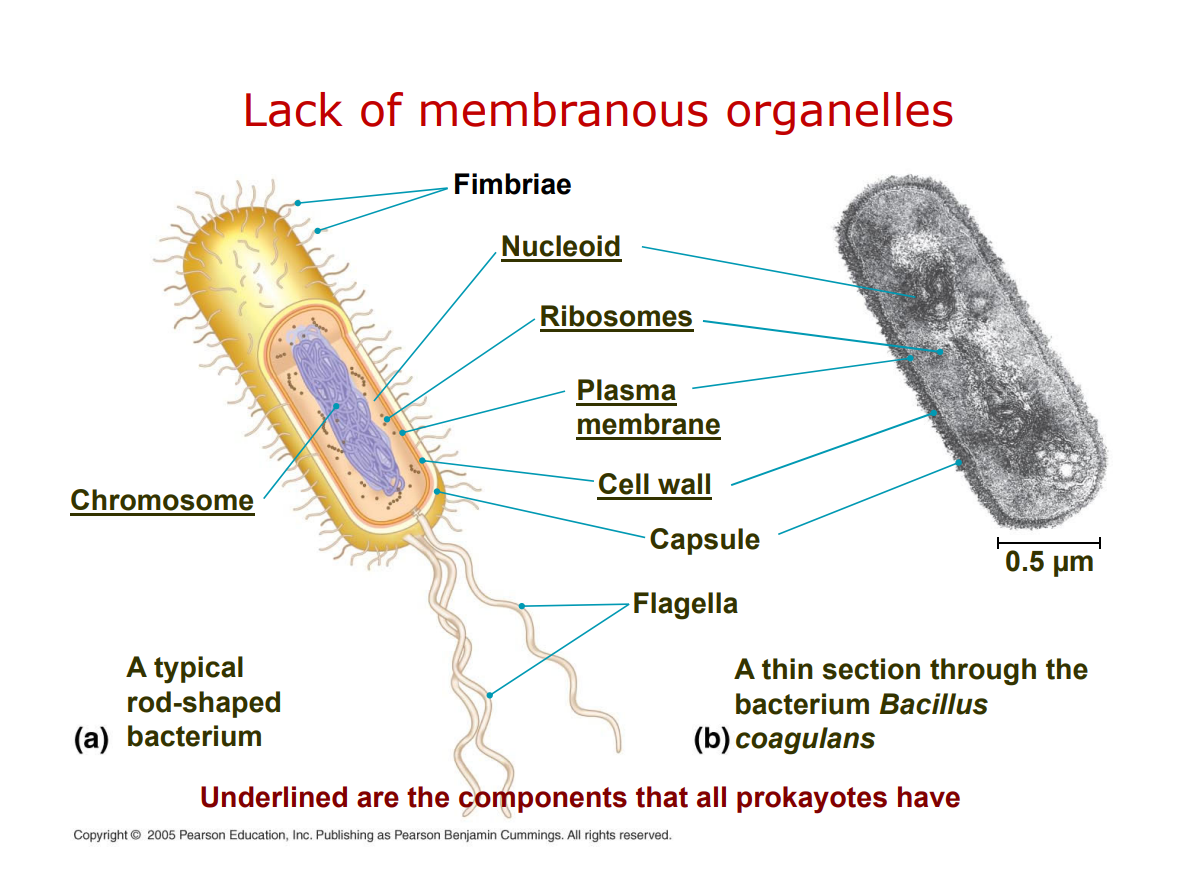
Q2. How is the prokaryotic cell wall unique in structure and function compared to eukaryotes?
A2.
Provides shape, protection, and prevents bursting in hypotonic environments.
Bacteria: Have peptidoglycan (sugar–peptide polymer).
Gram-positive: Thick layer.
Gram-negative: Thin layer + outer membrane (lipopolysaccharides).
Archaea: Lack peptidoglycan; have pseudopeptidoglycan or protein walls.
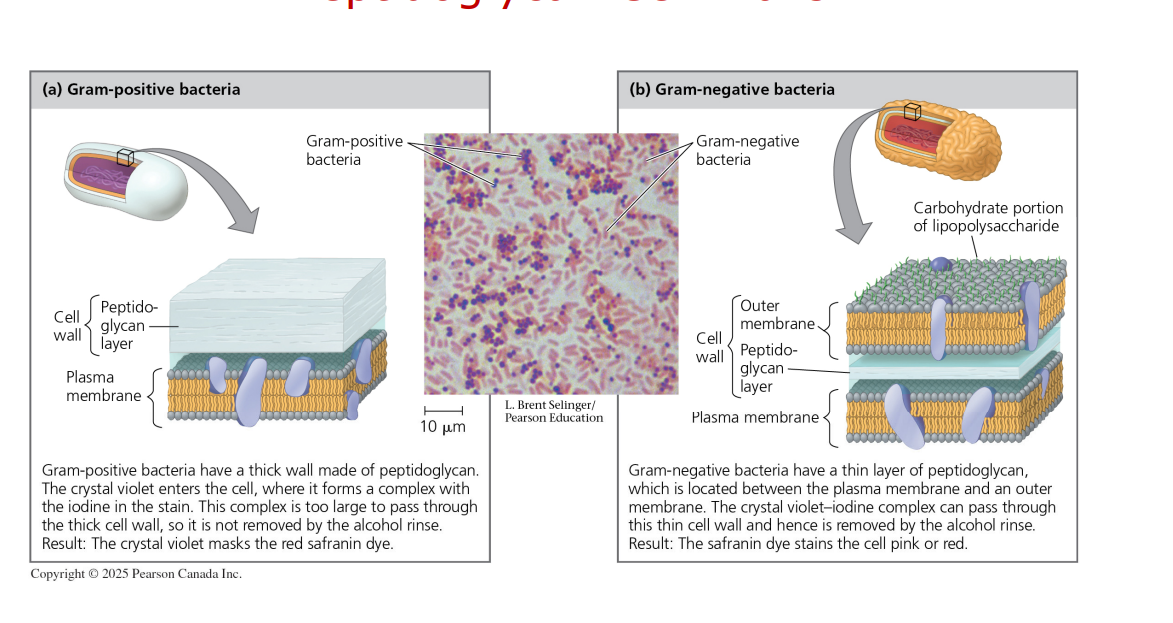
Q3. How is the internal organization of prokaryotes different from that of eukaryotes?
A3.
No membrane-bound organelles or nucleus.
DNA in a nucleoid (single circular chromosome).
May have plasmids (small DNA rings).
Ribosomes present but smaller (70S).
Specialized membranes may perform metabolic functions (e.g., photosynthesis, respiration).
S
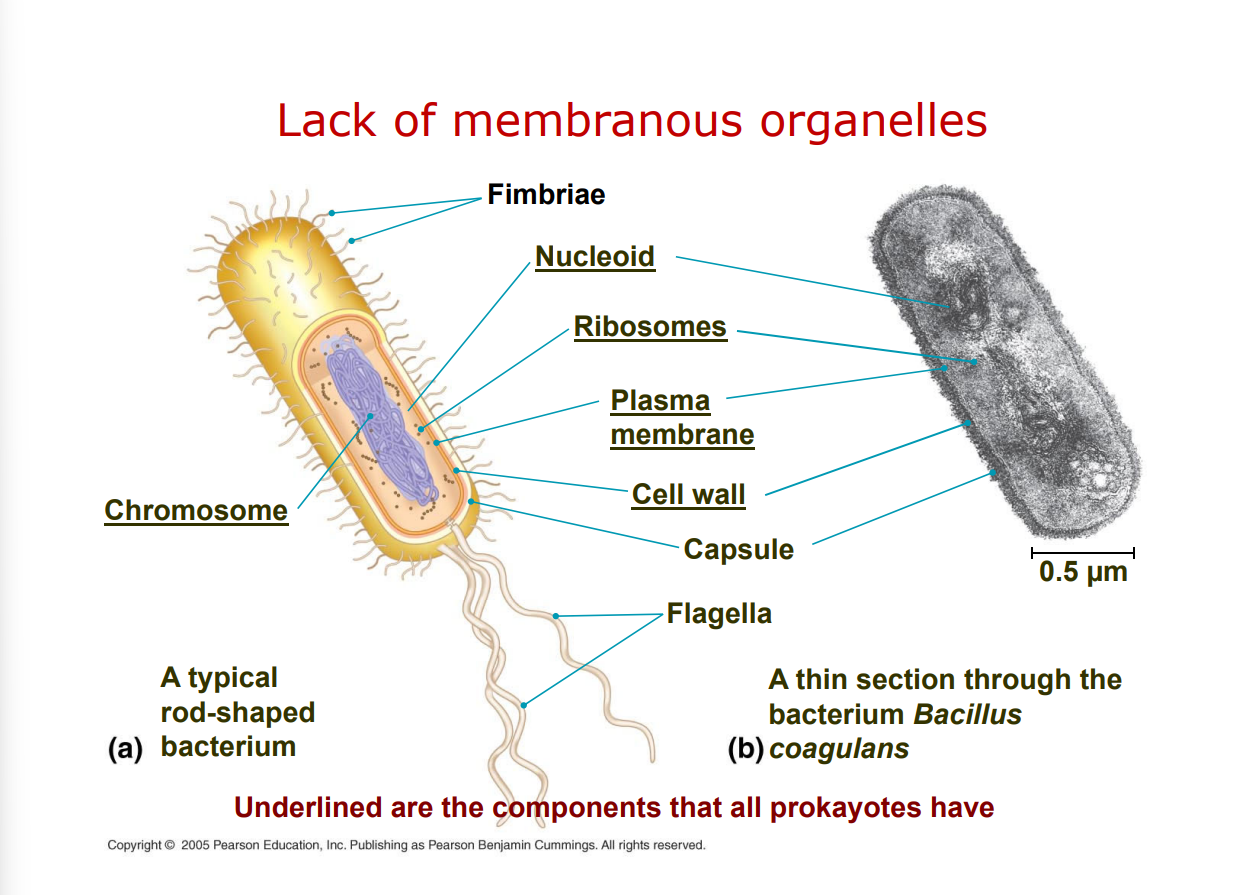
Q4. How can prokaryotes exist in populations of immense size?
A4.
Rapid reproduction by binary fission (every 1–3 hours).
Small size allows quick nutrient uptake.
Mutations accumulate rapidly, generating diversity.
Can form endospores to survive harsh conditions.
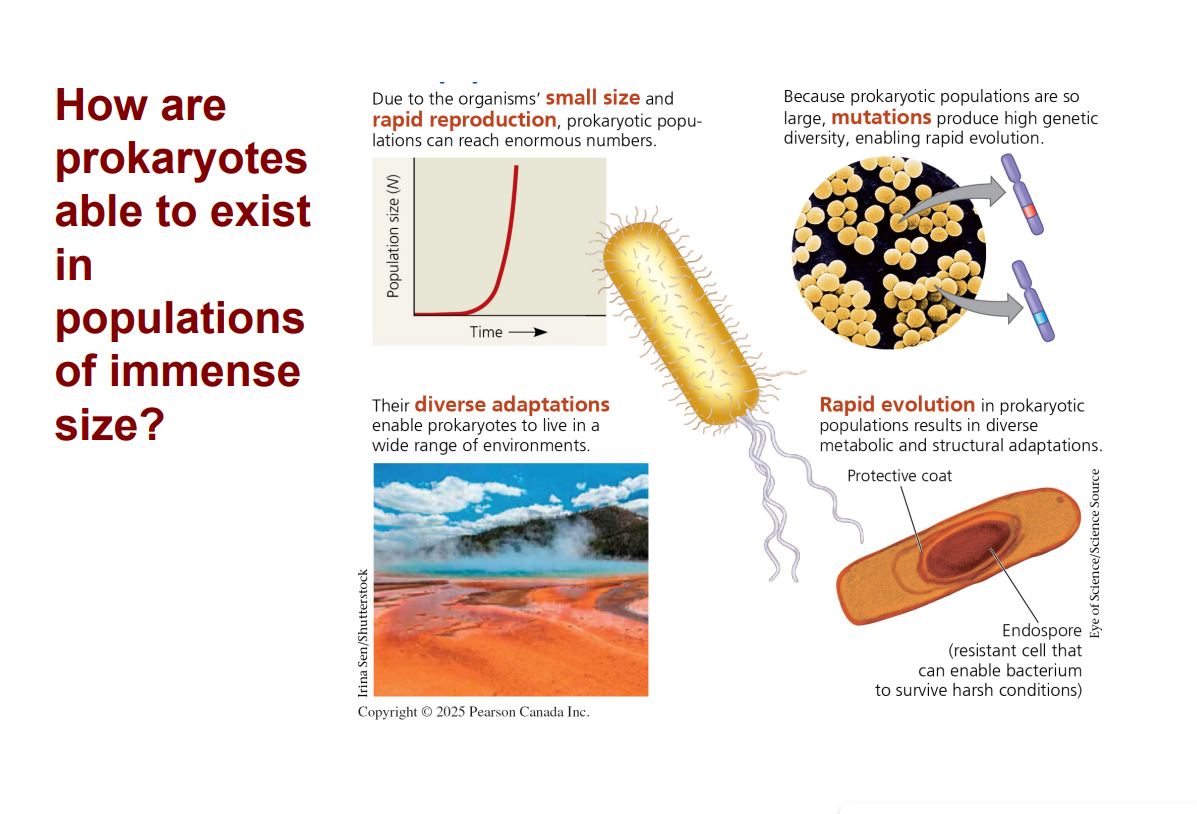
Q5. What are the four major modes of nutrition in prokaryotes?
Mode | Energy Source | Carbon Source | Example |
|---|
Photoautotroph | Light | CO₂ | Cyanobacteria |
Chemoautotroph | Inorganic chemicals | CO₂ | Nitrosomonas |
Photoheterotroph | Light | Organic compounds | Rhodobacter |
Chemoheterotroph | Organic compounds | Organic compounds | Most bacteria, animals |
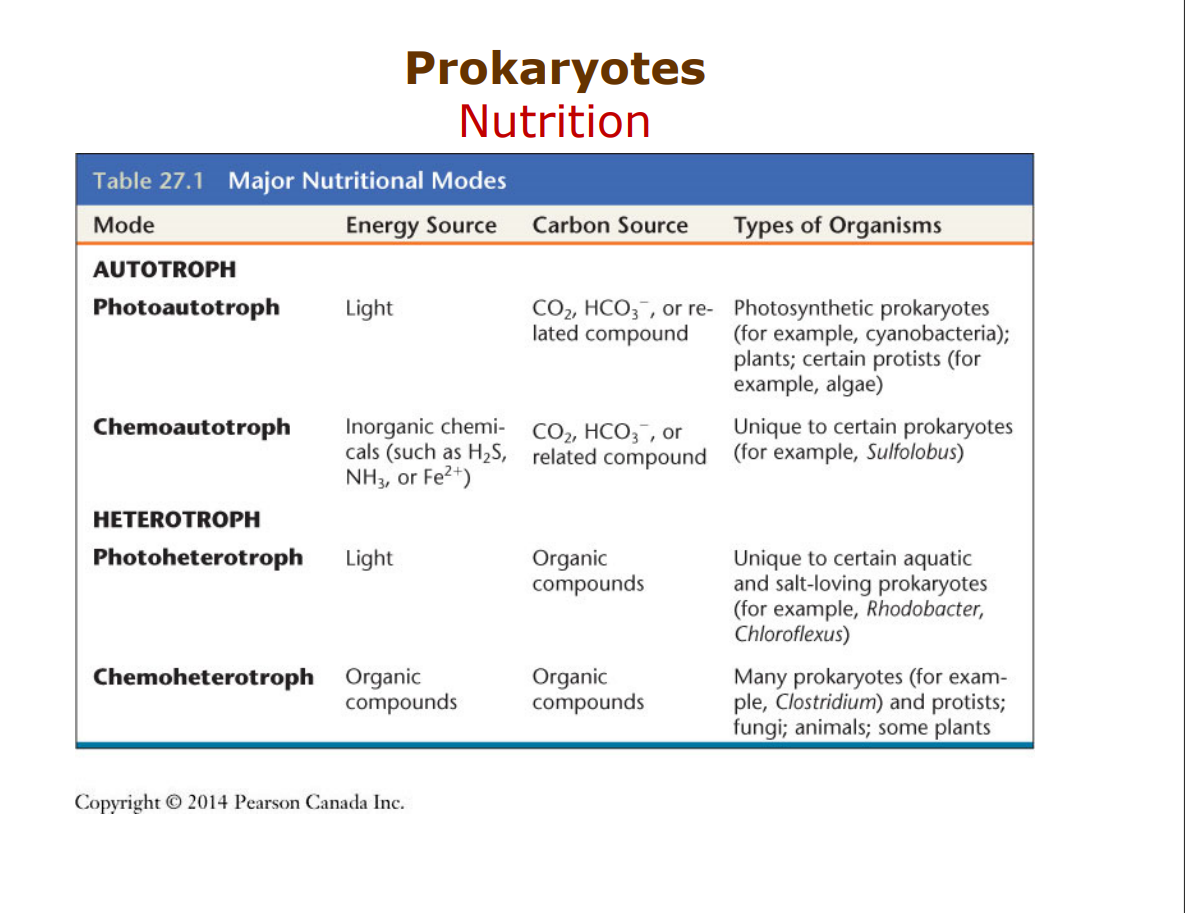
How do prokaryotes differ in their oxygen requirements?
Type | Description | Example |
|---|---|---|
Obligate aerobes | Require O₂ for respiration | Mycobacterium |
Obligate anaerobes | Poisoned by O₂; use fermentation or anaerobic respiration | Clostridium |
Facultative anaerobes | Can use O₂ when available, but survive without it | E. coli |
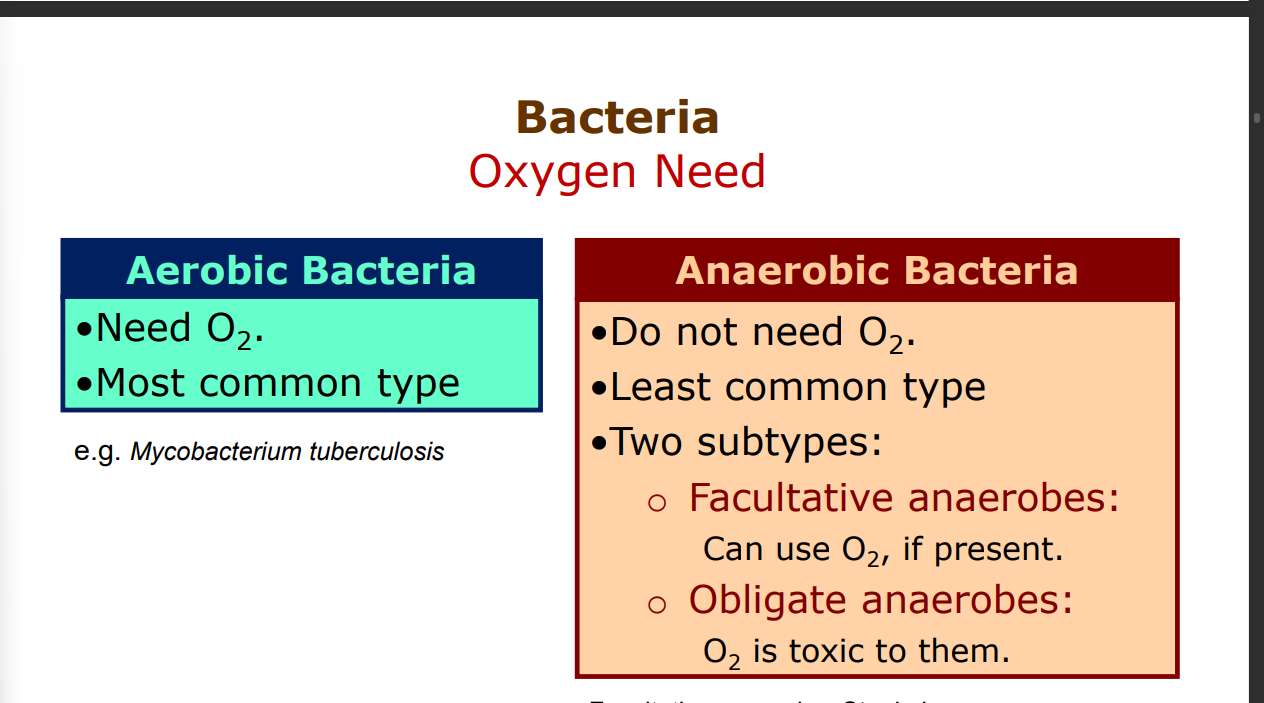
Which organisms perform nitrogen fixation, and why is it vital?
Certain prokaryotes (e.g., Cyanobacteria, Rhizobium) convert N₂ → NH₃.
Provides usable nitrogen for plants and other organisms — essential for amino acids & nucleotides
Q8. Describe three examples of metabolic cooperation between prokaryotes.
Biofilms: Communities of bacteria sharing nutrients and protection.
Heterocysts: Specialized cells in cyanobacteria for nitrogen fixation.
Sulfur bacteria & heterotrophs: Exchange nutrients in sediments.
Q9. What are unique features of organisms in Domain Archaea?
No peptidoglycan in cell walls.
Membrane lipids have branched hydrocarbons.
Extreme environments:
Thermophiles: Hot springs.
Halophiles: High salt.
Methanogens: Anaerobic, produce methane.
Genetic machinery (RNA polymerases, ribosomes) resemble Eukarya more than Bacteria.
Q10. What roles do bacteria play in the biosphere?
Decomposers: Break down dead matter, recycle nutrients.
Nitrogen fixation: Convert N₂ → usable nitrogen.
Producers: Photosynthetic bacteria form base of food chains.
Symbionts: Live in mutualistic relationships (e.g., gut bacteria).
Q11. How do bacteria impact humans?
A11.
Beneficial:
Aid digestion, synthesize vitamins.
Used in biotechnology, food production (yogurt, cheese), and bioremediation.
Harmful:Cause diseases (e.g., tuberculosis, strep throat).
Some release toxins (endotoxins/exotoxins).
Antibiotic resistance is an increasing concern.